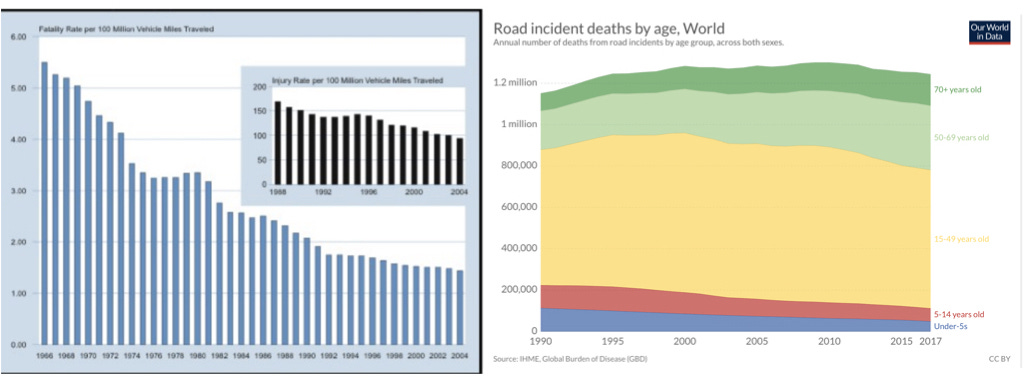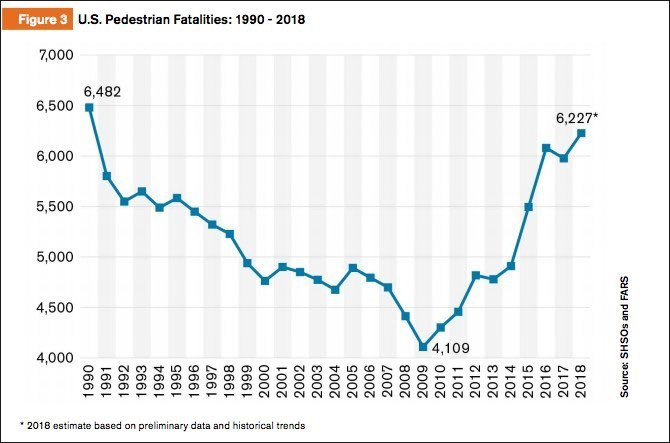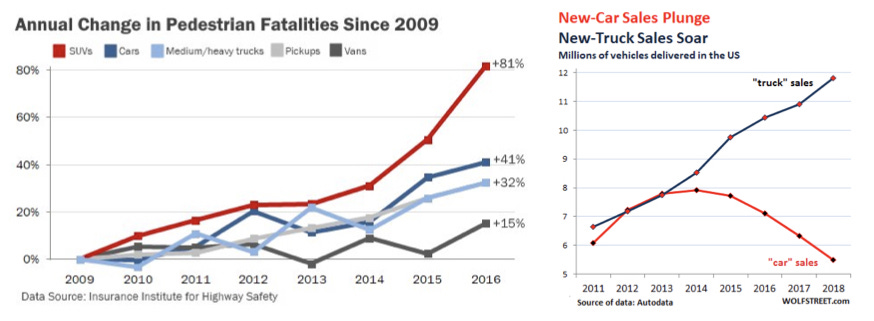James Gross (JG) and I go back to 2007, when he initially moved to New York. Since then we’ve started two companies together and spent a slightly insane amount of time debating nearly every topic under the sun. He surfs, reads, runs, and has become a serious proponent of micromobility, the movement to shift the way we travel short distances towards lighter weight human and electric-powered vehicles. He’s putting on Micromobility Europe in October in Berlin. If you’re in the area, we’ve got a 50% discount code you can use for tickets. - Noah (NRB)
James here. Imagine an alien came down to Earth and promised a new transformative technology. While it would allow for amazing freedom, it would come at the cost of 1.3 million lives per year. Those lives would be taken indiscriminately. Would we allow it?
We already have. The alien technology that convinced us to make this tradeoff? Cars.
Cars are getting safer everyday, right? Well yes, if you look at vehicle miles traveled (VMT) the death curve is going down. However, even with deaths per VMT declining, the total number of people who die in car crashes has been consistent over time because we keep driving more. All the while, life has gotten measurably safer in nearly every other area.

The story is even worse for pedestrians and cyclists, where it’s becoming increasingly dangerous to step out of the house without heavy armor around you. Here’s what anti-progress looks like, in this case for those of us who walk:

Why is this interesting?
As cities continue to grow, this problem is only going to keep getting worse. So why is it happening? It seems to be a combination of two big factors: distraction and weight. The low point on pedestrian deaths was 2009, two years after the introduction of the iPhone and the beginning of near-vertical growth in smartphone penetration. That lack of attention is combined with a car weight that has consistently increased since 1980, from around 3200 pounds to 4300 pounds today. Not surprisingly, the heavier the car, the more dangerous it is to everyone else.

So what’s the solution? For cars getting heavier I’m afraid that will almost definitely require some regulation, as everything (including electric) is moving us in the wrong direction. As for distracted driving, this one feels like something the market can actually solve. Let’s take one of my favorite companies, Apple. Tim Cook has come out and said that Apple’s greatest contribution to humans will be improving health. You could point to the EKG monitor in the watch as great progress. But let’s be serious, no matter how good that watch gets at telling me my ticker is off, Tim has a much bigger epidemic on his hands, and it is killing a lot more people than we realize (even the NHTSA believes the data is underreported). Apple needs to take some of its smartest engineers and figure out how to do better than an “I’m not Driving” modal.
How about more campaigning around how young people die? Cars take our children. When you look at the stats around cause of death, “Unintended Injury”—of which the car is a leading factor—leads every other issue by a fairly wide margin for anyone under 45. Despite that, it’s shockingly absent from any national conversations around health and safety.

But what about autonomous cars? It’s a reasonable long-term answer, but they’re simply not going to solve this problem anytime soon.
Cars own the roads and they have a monopoly on our minds and mobility. More Americans have died in car crashes since 2000 than in both World Wars. Out of my cold dead hands isn’t just the rally cry of some old man clutching a rifle, it refers to all of us, gripping our steering wheels. (JG)
Inspiration of the day:
On a much lighter note! I’m a huge fan of Singita and how they are blending hospitality and conservation in innovative ways. Also worth noting is their culinary school which is taking aspiring Chefs from neighboring villages (adjacent to their lodges) and training them up to an exceptional, international standard. In their words, “The [kitchen] is home to the carefully selected students of a rigorous, Singita-crafted professional culinary course which produces 10 internationally qualified commis chefs every year. Fewer than 7% of applicants (all young people from local communities) can be accepted into this competitive program but for those that are, a very bright future awaits.” (CJN)
Quick Links:
The design lovers guide to Marfa. (CJN)
This is a pretty good, albeit simple, explainer: “Seven basic questions about quantum technology, answered” (NRB)
Thanks for reading,
Noah (NRB) & Colin (CJN) & James (JG)
PS - Noah here. I’ve started a new company and we are looking for our first/lead product designer to join the team in Brooklyn. If you are a product designer or know anyone who is great, please share. Dinner’s on me at a restaurant of your choosing if you help us find someone. [Does Amass in Copenhagen fall under this provision? Heh heh heh -CJN]


